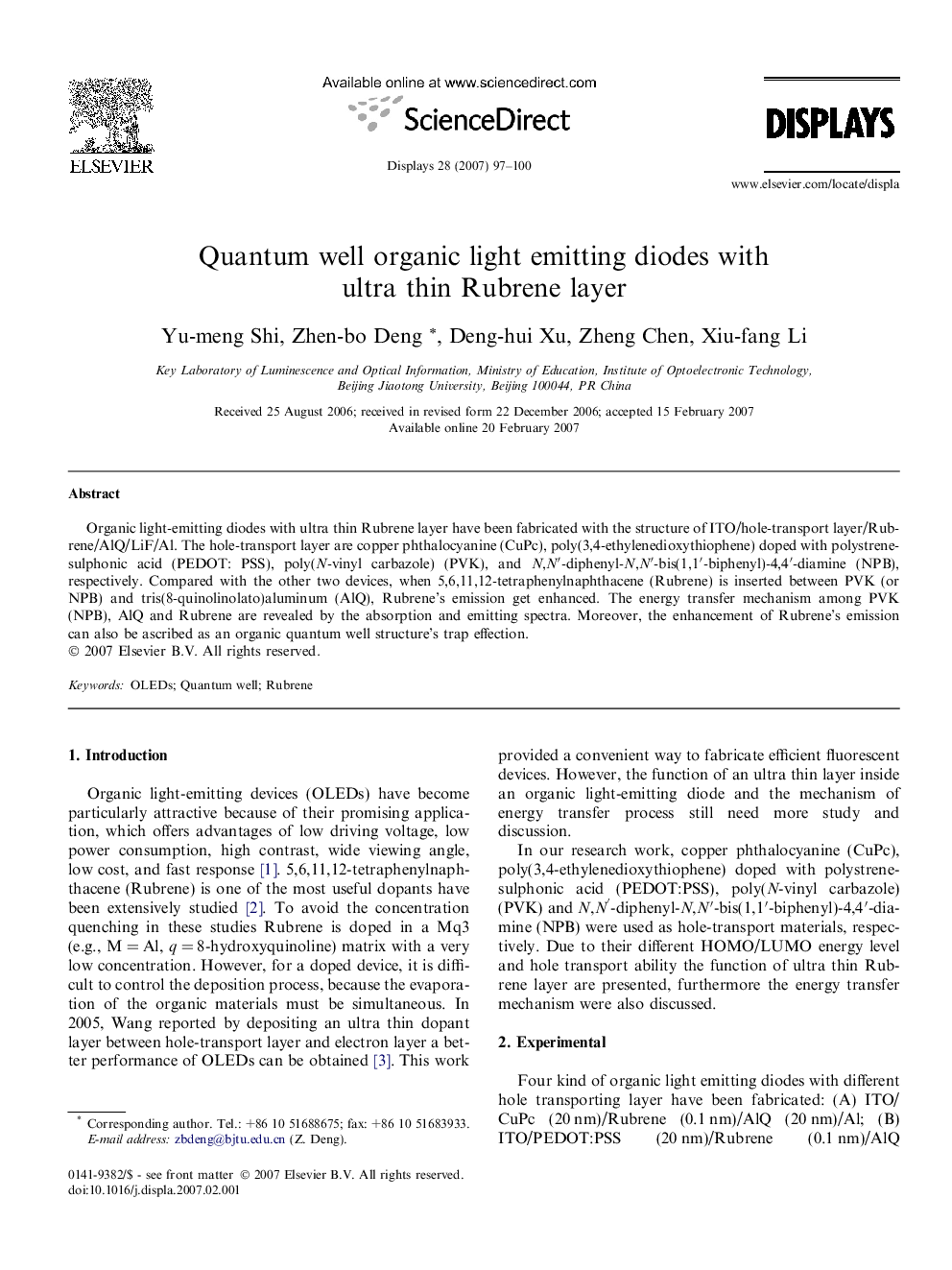| Article ID | Journal | Published Year | Pages | File Type |
|---|---|---|---|---|
| 540974 | Displays | 2007 | 4 Pages |
Organic light-emitting diodes with ultra thin Rubrene layer have been fabricated with the structure of ITO/hole-transport layer/Rubrene/AlQ/LiF/Al. The hole-transport layer are copper phthalocyanine (CuPc), poly(3,4-ethylenedioxythiophene) doped with polystrenesulphonic acid (PEDOT: PSS), poly(N-vinyl carbazole) (PVK), and N,N′-diphenyl-N,N′-bis(1,1′-biphenyl)-4,4′-diamine (NPB), respectively. Compared with the other two devices, when 5,6,11,12-tetraphenylnaphthacene (Rubrene) is inserted between PVK (or NPB) and tris(8-quinolinolato)aluminum (AlQ), Rubrene’s emission get enhanced. The energy transfer mechanism among PVK (NPB), AlQ and Rubrene are revealed by the absorption and emitting spectra. Moreover, the enhancement of Rubrene’s emission can also be ascribed as an organic quantum well structure’s trap effection.
